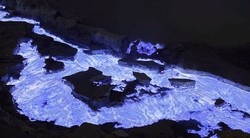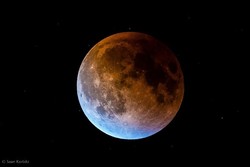There are countless wonderful and special things in the world that are hard to believe. The gorgeous architecture and nature created by humans are, of course, marvelous, but the mysterious natural phenomena that the Earth naturally presents without any influence of human beings are so unbelievably beautiful that words often cannot describe them. As beautiful and mysterious as these natural phenomena are, they rarely occur, and it is difficult to see them even once in your life, it takes both enormous effort and luck to observe them with your naked eyes. With CAH, let's learn more about the beautiful phenomena that nature only sometimes shares with people!
1. Morning Glory Clouds
Observed only in Carpunteria, which is located in Northern Australia, the Morning glory clouds are so rare that they are called the most unusual phenomenon in meteorology. People who have witnessed the morning glory clouds say it is so mesmerizing that observing it was a wonderful and special experience in their life. Morning glory clouds are also called roll clouds or arch clouds because of their unique shape. The maximum length of this cloud is about 1,000 km, more than twice the distance between Seoul and Busan, and its maximum speed is 56 km/h. Some professional glider pilots try to fly above these clouds to enjoy a breathtakingly amazing flight. There have been many studies on the phenomenon of morning glory clouds, but the exact cause has yet been identified. However, the most common assumption is that the clouds are closely related to the sea breeze and it occurs at the time when the clouds meet the sea breeze as they pass through peninsulas and bays. Regarding the morning glory cloud phenomenon, NASA said, "When fluid, moist, cool air meets an inverted layer, a layer of the atmosphere in which the temperature of the air increases with altitude, it can form a long, horizontal, cylindrical tube-shaped cloud." at their study.

2. Eternal Flame Falls
Eternal Flame Falls, located on the road of Chestnut Ridge Park, one of the Southern Towns of Buffalo, New York, is a very unfamiliar place to travel for the people living in Korea, but it is a popular hiking trail for Americans. This place is called the most unusual waterfall on Earth because the flames of the light never go out even among the falling water. After studies, scientists found out that the reason why flame remains unextinguished is because of some gas that leaks from the decomposition of shale, an ancient hot bedrock, and the organic matter present in the sediment of the rock, keeps the flame burning. In particular situations, the shale rock hardens the mud and makes it concrete, and there are many hollow caves in between which is a good environment to allow the ejected natural gas to burn without being dispersed into the air.

3. Kawah Ijen
Kawah Ijen volcano is located on Java Island, the fourth largest of nearly 13,000 Indonesian islands. Indonesia has numerous active volcanoes and there are about 70 which people do not know when or how they will erupt. Among them, Kawah Ijen is the only one which contains a sulfur mine with 99 percent purity. The Kawah Ijen erupts mysterious blue lava, unlike all the other volcanoes that are red. The reason this volcano is blue is because of sulfur gases, which make it very difficult to breathe near, so the number of tourists visiting Kawah Ijen is very small. The nearly 20km caldera-generated crater of Kawah Ijen has a mineral-rich, jade-colored lake, which burns at high temperatures above 300 degrees Celsius and emits blue light when sulfur gases, which are characterized by bluish light, are ejected from the lava.

4. Super Blue Blood Moon
A super blue blood moon refers to the moon in a lunar eclipse where a super moon, a blue moon, and a blood moon all occur at the same time. A supermoon is a full moon that is closest to Earth and appears much larger and brighter than usual. The moon revolves around the earth in an ellipse, moving closer to the Earth and moving away from it in a regular cycle. The average distance from Earth to the moon is about 384,000 km, and the closest distance is about 357,000 km. When the moon is at its closest it is about 14% larger and 30% brighter than a normal moon. A blue moon is the second full moon in a month. The blue moon's name is not derived from the color blue, but from the old English word 'belewe', meaning betray, which has a similar pronunciation to blue. Based on the English word meaning “betray”, this month is also called the month of the traitor. Finally, the blood moon appears on Earth when the Sun, the Earth, and the Moon are in a straight line. We can see a total lunar eclipse where the earth's shadow covers the moon. It is a phenomenon that reaches the moon and makes the moon seem red. A ‘super blue blood moon’, in which these three phenomena occur simultaneously, appeared on January 31st, 2018, which is 150 years since the last in 1866. Though the normal cycle is about 100 years, exceptionally, the next Super Blue Blood Moon will be January 31st, 2037. So you might want to put it down on your calendar.

5. Horizontal Rainbow
The rainbow we usually see is a semicircle-shaped ridge. However, the horizontal rainbow, also called the fire rainbow, has a unique shape that is different from normal rainbows. This rainbow does not appear in a semicircle, but appears to be straight and flat. People say that looking at the horizontal rainbow is like using the beauty camera app. A horizontal rainbow is a phenomenon that can be seen when the Sun rises above 58 degrees, and is rarely seen in Korea. Horizontal rainbows are more regularly visible in some areas depending on their latitude. However, in mid-latitude countries such as Northern Europe and Korea, horizontal rainbows occur only very rarely. In Korea, on November 19th, 2013 on Jeju Island, a rainbow formed horizontally from the sky and became a hot topic among people. According to an article in the JoongAng Ilbo, a citizen who witnessed the rainbow said, “It looked like colorful silk spreading in the sky,” and expressed wonders about the horizontal rainbow.

We can learn humility and realize the meaning of life through overwhelming emotions and surprises in front of the magnificent nature. By seeing natural phenomena that we cannot actually observe in person through beautiful pictures, we will be able to gain greater enlightenments indirectly. CAH wants its readers to feel the mystery of natural phenomena and to appreciate these beautiful works of nature.

